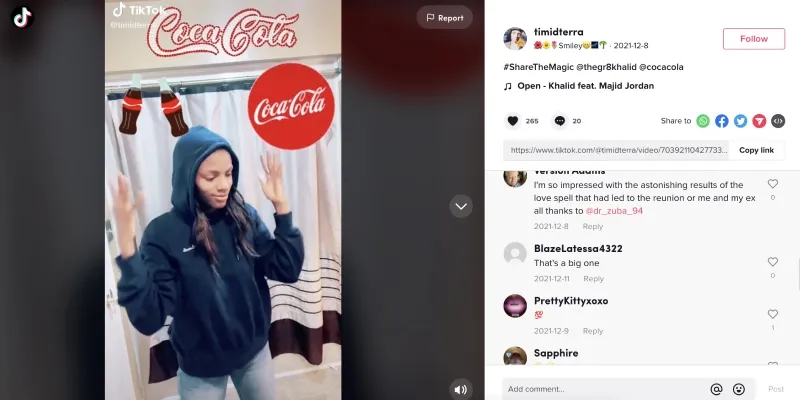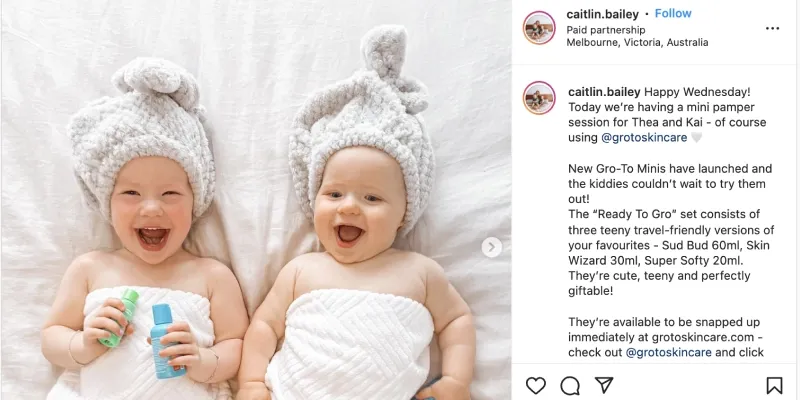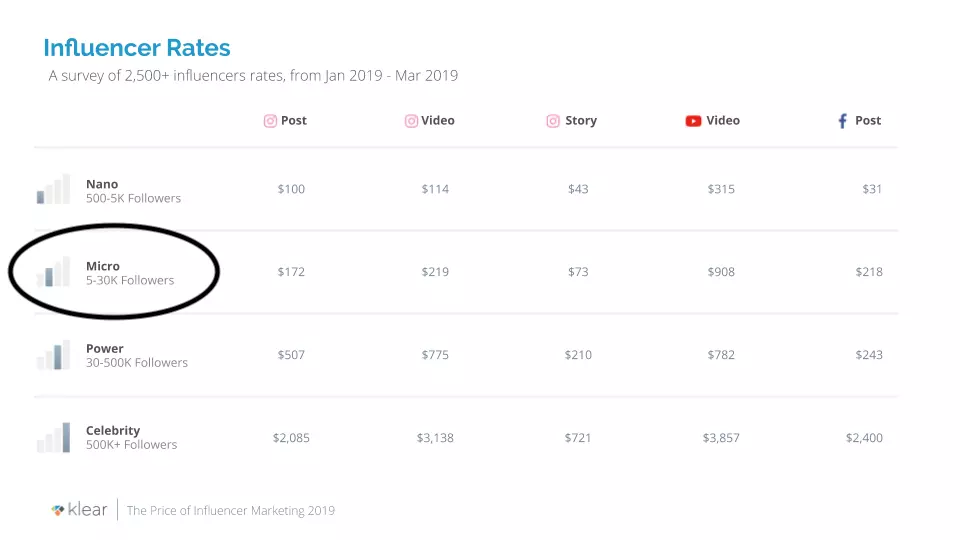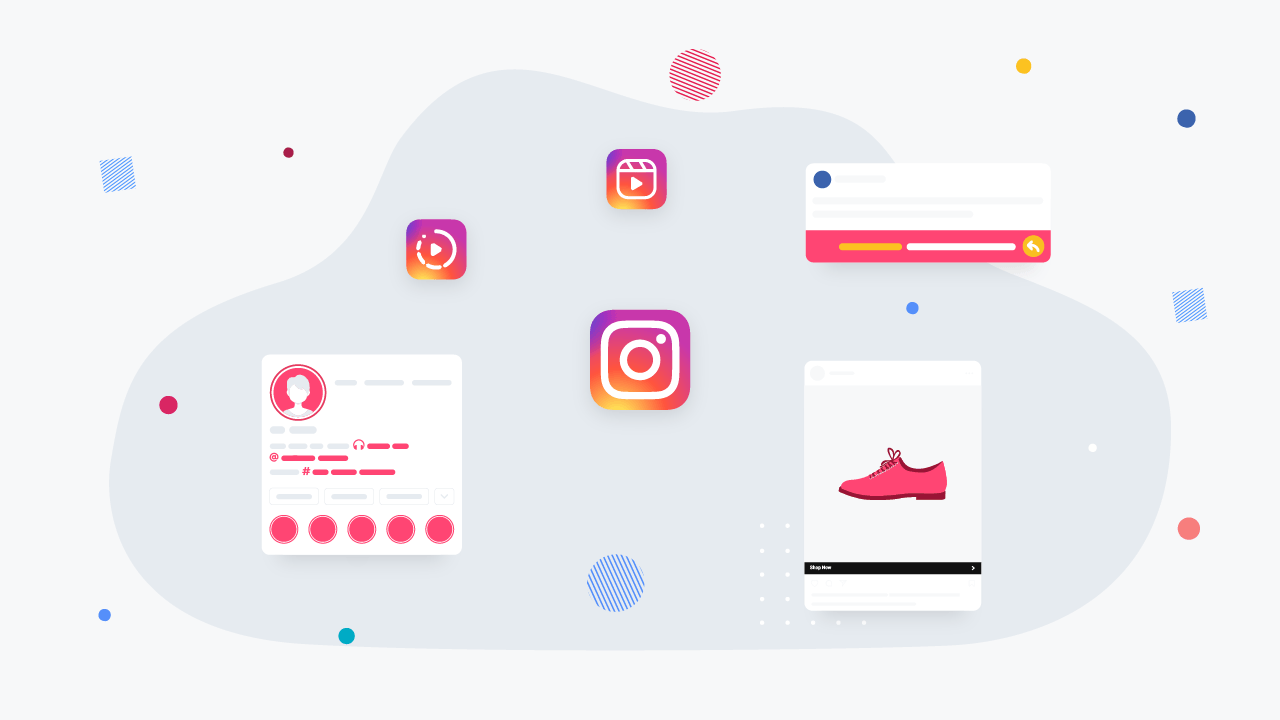In the U.S. alone, the investment in influencer marketing surged from $3.69 billion to $4.14 billion in 2022. Businesses, on average, achieve $6.50 in revenue for every $1 they invest in influencer marketing
More and more brands are realizing the advantages of collaborating with influencers for their marketing efforts. But you don't always have to team up with the biggest names in the influencer world to achieve success.
In fact, partnering with micro-influencers often leads to more successful campaigns, especially when targeting niche audiences. Micro-influencers have a knack for generating higher levels of awareness, trust, and engagement.
So, if you want to tap into the world of micro-influencers and want to find the perfect one for your brand, this guide is for you. We will walk you through the exact process of identifying micro-influencers for your brand, which can deliver the results you need from your campaigns. Let's dive in!
What Is A Micro-influencer?
Micro-influencers have around 10K to 100K followers and operate within niche markets, as opposed to catering to a broader audience like celebrities or mega-influencers.
With a smaller following, micro-influencers achieve higher engagement rates, which makes them ideal for creating highly targeted sponsorships.
Since their audience already expects niche-specific marketing messages, collaborating with a micro-influencer allows you to reach people who are genuinely interested in your product or service.
For instance, if you are in the business of selling food mixers, partnering with a foodie micro-influencer who shares recipes and baking content could be an excellent choice.
Know more about Instagram Influencer Marketing: All You Need To Know
What Are The Benefits Of Collaborating With Micro-influencers?
Micro-influencers have an advantage when it comes to engagement because of their smaller audience size. They can have a more personal connection with their audience and interact more frequently with their followers.
Let's look at the numbers to see the impact:
- Influencers with 10,000 or more followers have an engagement rate of only 3.6%.
- Those with 5,000 to 10,000 followers achieve a slightly higher rate at 6.3%.
- Surprisingly, micro-influencers with 1,000 to 5,000 followers experience the highest engagement rate of 8.8%.
- In fact, when micro-influencers recommend products, they drive 2.2 times more conversations compared to others.
- 82%. of consumers actually prefer following recommendations from micro-influencers over those from big-shot celebrity influencers.

Considering these numbers, it's no wonder that brands working with micro-influencers experience numerous benefits, such as:
- You get a high return on investment since micro-influencers have established relationships with their followers, who trust and value their recommendations. This social proof extends to your brand, helping you build authentic connections with your target audience.
- Micro-influencers are relatable figures, not untouchable celebrities, making it easier for their followers to connect with them on a personal level.
- Campaigns with micro-influencers yield higher engagement levels and better marketing performance metrics. Their highly targeted audiences are perfect for sharing content aimed at specific niches or verticals.
- Partnering with micro-influencers allows you to participate in social conversations at a deeper level, thus enhancing your brand's presence.
- Working with micro-influencers is cost-effective, as their targeted impact comes at a lower fee compared to celebrity or mega-influencers.
Key Traits One Must Look For In A Micro-Influencer
This is the most crucial stage for brand marketers, as it can make or break your influencer marketing campaign. So, what should you look for when finding the right influencer for your micro-influencer marketing campaign?
First and foremost, define your goals.
- What do you want to achieve with your campaign?
- Is it brand awareness, increased sales, or more subscribers?
Once you have set your goals, start searching for the perfect influencer. Keep in mind these key traits before making any decisions.
Engagement Vs. Followers
Don't be solely focused on the number of followers an influencer has. What really matters is their engagement rate with their audience.
Analyze how often people interact with them and how responsive the influencer is. If the engagement rate is low, it's best to move on and find another influencer.
Niche
Micro-influencing works because of the highly specific, niche, and highly engaged audience. These influencers are usually experts in their niche topics, which makes them a great fit for relevant brand content.
Remember, relevancy is key. Consumers prefer a favorite cooking blogger endorsing a ready-to-eat meal over a high-profile beauty blogger who mostly talks about keto diets.
Audience
Checking the influencer's audience is extremely important. It helps you understand whether the influencer is the right fit for your product or not.
If you and the influencer don't have a similar audience, reaching out to them won't be of much use. Also, consider the location of their audience. If your target market is different, it may not yield significant value from the partnership.
Content Shared
Take a look at what the influencer shares on their pages.
Do they primarily share links for their audience to follow? If so, examine the types of links and the content their audience prefers.
Based on that, you can adjust your messaging to increase the chances of having your website link shared by the influencer.
Authenticity
Consumers nowadays prefer genuine sources of information and trust those who take a more authentic approach to brand or product promotion.
Aggressive marketing that goes over the top tends to repel the audience and can harm the influencer's reputation as well as your brand's reputation. Aim for a more genuine and trustworthy approach.
Which Brands Have Worked With Micro-influencers?
Let's take a look at how big brands collaborate with micro-influencers for product or service promotion.
Spotify
One of the leading music platforms globally, Spotify has been working with micro-influencers for years to promote their algorithm feature, "Discover Weekly." These micro-influencers share their genuine experiences and testimonials about Spotify products and features on Twitter, thus connecting with their fans on a personal level.
Our New Single “Do You Wanna Talk?” Releases everywhere on 28th July!
— Wild Horse (@wildhorserockuk) July 3, 2023
Pre save on your preferred streaming platform now: https://t.co/rivLGB3X2m#wildhorse #doyouwannatalk #newsong #music #newmusic #pop #rnb #indie #love #the1975 #bbcintroducing #harrystyles #discoverweekly pic.twitter.com/ttfvTPXE8U
Coca-Cola
With the #ShareTheMagic campaign, Coca-Cola uses micro-influencers on TikTok to spread the joy of their drink worldwide. They engage with social media accounts that have less than 100,000 followers to showcase activities like traveling, sports, food, and dancing while enjoying Coca-Cola.

Image Source: EmbedSocial
Amazon
The eCommerce giant Amazon promotes its audiobook service, Audible, through collaborations with micro-influencers on platforms like YouTube.
Sponsored videos featuring smaller YouTubers help generate buzz and reach a wider audience. Amazon also hires micro-influencers on Instagram within the music/audio niche to share their experiences and make recommendations about Audible.

Gro-To
A smaller Australian company, Gro-To, collaborates with micro-influencers to target their niche market. They work with influencers like Caitlin Bailey, a mom of two, who shares personalized photos of her babies using the new Gro-To product line on Instagram. This way, they try to create a genuine connection with their target audience.

How To Find Micro-influencers?
Start With Your Customers
Begin by looking at your existing customers to see if any of them are influencers. Collaborating with influencers who are already familiar with your brand can bring more authentic and impactful results.
A happy customer can be your best brand ambassador!
Look among your own social media followers
Here's how you can identify micro-influencers who are already following you on social media:
Step 1: Take a look at your follower list on social media platforms like Twitter and Instagram. Focus on users who have between 1,000 and 10,000 followers.
Step 2: Once you have identified these micro-influencers, visit their profiles and see if they post content related to your niche. For example, if you run a local restaurant, look for micro-influencers who are in your area and frequently share food-related posts.
Step 3: Now, it's time to approach these influencers. You can offer them incentives such as free coupons or discounts in exchange for them posting content of your product or service. Reach out to them and discuss the collaboration details.
Pros
- They are already familiar with your business, so you don't have to spend much time explaining your business.
- Your followers are more likely to be receptive to promoting your business since they are already fans.
- If you have a local business, this approach works particularly well as you can find micro-influencers who are located nearby.
- Micro-influencers tend to create more natural and authentic posts, which resonate better with their followers.
Cons
- It might be challenging to find micro-influencers within your specific business niche among your followers.
- By solely relying on influencers within your social connections, you might miss out on other highly influential micro-influencers who could bring more value to your campaigns.
By considering both the pros and cons, you can make an informed decision on whether to focus on micro-influencers among your own social media followers or explore other options for finding the right influencers for your business.
Search Using Tools
There are several popular tools available to assist you in influencer research, and here are a few examples:
- BuzzSumo
- Followerwonk
- Klear
These tools can be helpful in finding the right micro-influencers for your business. While some of these tools offer free versions, it's often beneficial to invest in paid versions to maximize their capabilities. Let's take a look at an example using BuzzSumo:
Step 1: Visit BuzzSumo
Step 2: In the Search Bios field, enter a topic related to your business. This will help narrow down the search results.
Step 3: Select "Regular people" as the filter to specifically target micro-influencers.
Step 4: You can further refine your search results by sorting influencers based on relevancy, page authority, number of followers, and more. Look for individuals with several thousand followers and solid page authority, as they make ideal micro-influencers for partnerships. Reach out to them and discuss potential collaborations.
Pros
- It's easier to find and sort through relevant micro-influencers for your business.
- This process is less time-consuming compared to manual searches.
Cons
- Free versions of these tools have limited functionalities, so upgrading to the paid versions is often necessary for more comprehensive features.
- Approaching individuals who are not already familiar with your business requires good negotiation skills to establish partnerships successfully.
Approach Bloggers
If your business operates within a specific geographical region, local bloggers are great in reaching your target audience. Here's how you can identify and approach these bloggers:
Step 1: Perform a Google search or use tools like Alltop to find bloggers who are relevant to your industry or niche.
Step 2: Create a list of around 25 to 50 bloggers, including their contact information and social media profiles. Reaching out via email is generally the preferred method.
Step 3: Before approaching bloggers directly, it's a good idea to build a relationship with them. Here are some tips:
- Leave relevant comments on their blog posts.
- Engage with them on social media by liking and sharing their articles.
- Occasionally send them emails to compliment their work.
Step 4: Approach the bloggers for partnership and social media promotion. Be transparent about your intentions and avoid using a soft-selling approach.
Pros
- Bloggers can help you reach a more targeted audience, especially if you have a local business.
- If your business is mentioned in a high-quality blog post, you can benefit from the blog traffic over an extended period.
Cons
- It is challenging to find bloggers who are specifically relevant to your business niche in your local area.
- Building relationships with bloggers and managing partnerships can be time-consuming.
Perform Hashtag Research
Twitter and Instagram are the best platforms for this approach, and you can even use Google to search for hashtags. Here's a step-by-step guide on how to conduct hashtag research on Instagram:
Step 1: Choose a specific keyword that is relevant to your business. For example, instead of searching for #food, try something more specific like #veganfood on Google. Usually, the first two search results will be from Instagram and Twitter.
Step 2: Click on the Instagram link, which will display both the top posts and recent posts for the chosen hashtag.
Step 3: Click on the images to view the user profiles. Remember, you are looking for micro-influencers, so many of the top posts may be from big influencers who may not be the right fit for your business.
Step 4: Go through the images and profiles, checking their follower numbers, engagement rates, and post types. Create a list of micro-influencers that you believe would be suitable for promoting your business.
Step 5: Reach out to them for partnership or promotion deals. Send complimentary product samples or freebies to encourage micro-influencers to post about your products.
Step 6: You can also connect with micro-influencers at real-life events. Attend local exhibitions, seminars, workshops, or any events relevant to your business.
You may come across micro-influencers and have the opportunity to meet and interact with them face-to-face. You might even discover that there are micro-influencers within your friend circle or among people you already know.
Pros
- You will find many micro-influencers who are willing to promote your business.
- Despite being classified as micro-influencers, some users you find with hashtag research may have a significant reach within your niche.
Cons
- It can be time-consuming and requires effort to find suitable micro-influencers through this process.
- Choosing the wrong hashtag may cause you to overlook important influencers.
How Much Do Micro-Influencers Charge?
According to a study on influencer rates, micro-influencers typically charge around $170 for an Instagram post, $220 for a video, and $70 for a story. It's worth noting that these rates are significantly lower compared to macro-influencers, who may charge thousands of dollars per post.

Note that these charges can vary based on the following factors:
- Follower Count
- Engagement Rate
- Niche or Industry
- Scope of Work
- Duration of Campaign
- Geographic Location
It’s Your Turn Now!
Micro-influencer marketing is not just a passing trend; it has a promising future ahead.
Tap into the potential of micro-influencers who can connect with your target audience on a more personal level. While you may find it difficult to find the right micro-influencers, the methods we have shared earlier in this guide will bring you closer to the right influencer.
Using micro-influencer marketing ensures that your marketing budget is spent only on reaching your ideal audience and not the masses.
And if you need assistance in managing your social media accounts for any social media marketing campaign, Statusbrew is here to help! Book a free demo today to understand how we can help!
Statusbrew is an all-in-one social media management tool that supports Facebook, Instagram, Twitter, Linkedin, YouTube, and even Google My Business.




Explore the Statusbrew range of social media tools
Cancel anytime!